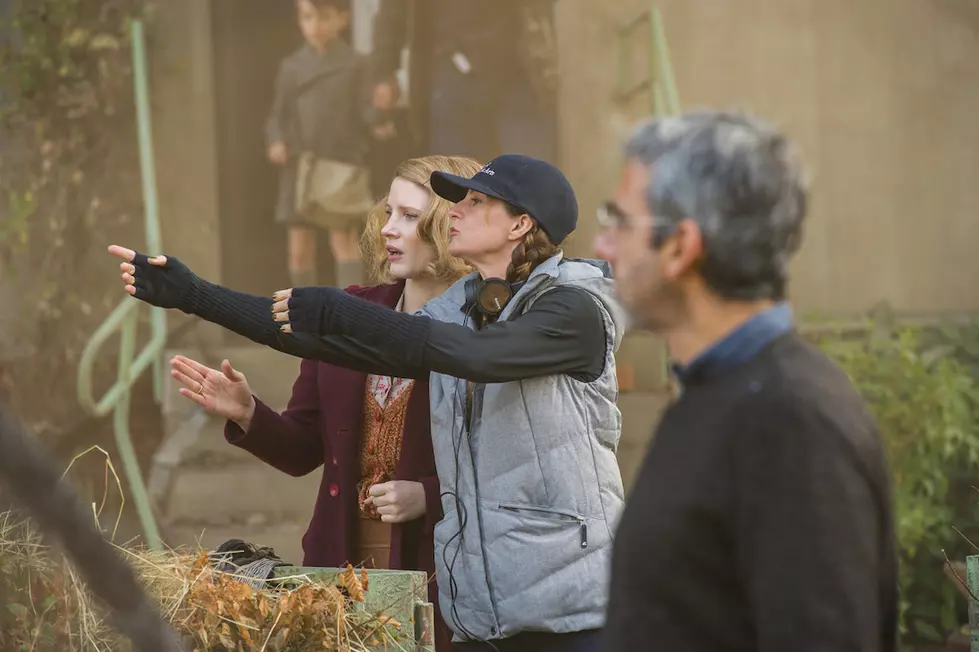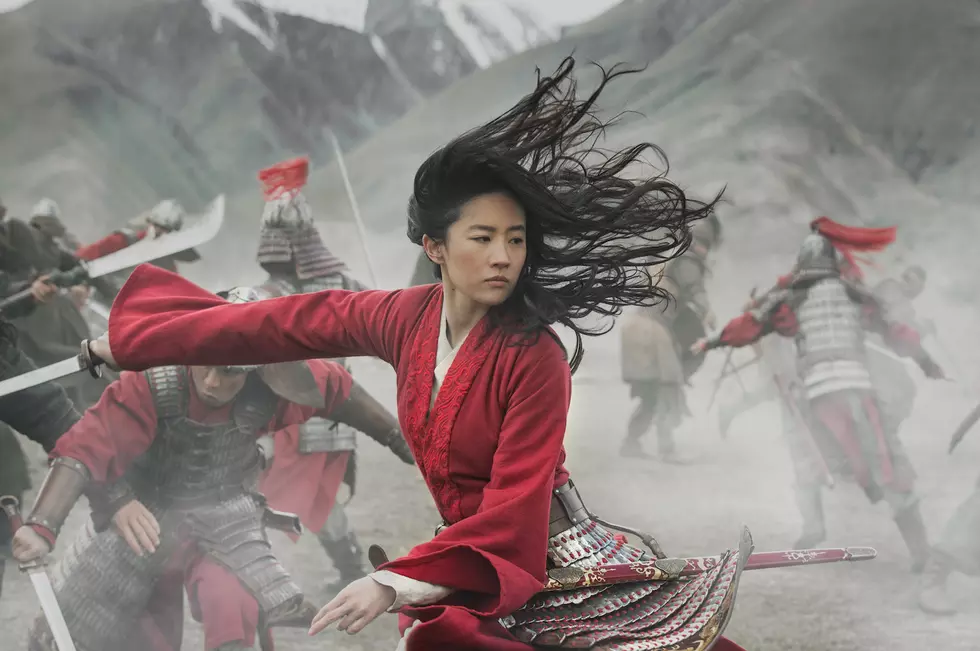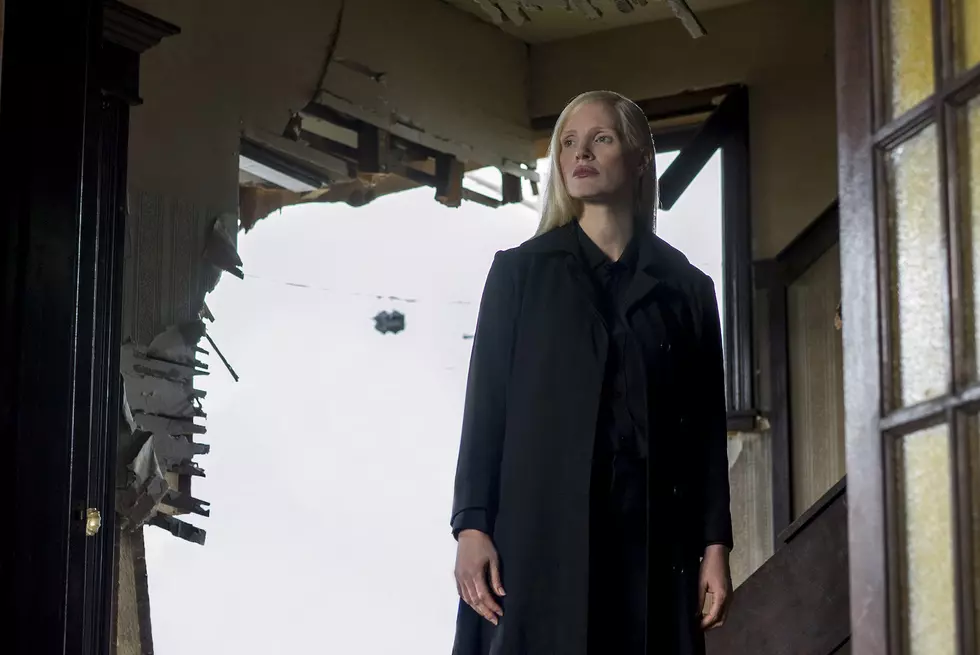
How Niki Caro Made a ‘Consciously Feminine’ Holocaust Movie With ‘The Zookeeper’s Wife’
It was 5PM on Friday in Midtown Manhattan. On no sleep, director Niki Caro had gone straight from a delayed red eye to a hotel to do interviews for her historical drama, The Zookeeper’s Wife. Being one of the last people to talk to Caro after six hours of press, I didn’t expect the liveliest of conversations. After all, we were talking about a Holocaust movie; how cheery could things get?
But somehow, Caro was bubbling with energy and one of the most enthusiastic filmmakers I’ve ever interviewed. The New Zealand director is best known for 2002’s Whale Rider and McFarland USA; in The Zookeeper’s Wife she tells the story of a heroic Polish woman. Based on the non-fiction book by Diane Ackerman, the film stars Jessica Chastain as Antonina Zabinski who turns her and her husband’s (Johan Heldenbergh) Warsaw zoo into a safe haven for Jews during the Nazi occupation of Poland. The Zookeeper’s Wife isn’t just a Holocaust story we haven’t heard before, but one with a heroic female lead, and directed, written (Angela Workman), and produced by women. As Chastain wrote in a Hollywood Reporter op-ed, it might have been the most female-populated film crew in Hollywood history.
Caro, who’s about to direct Disney’s live-action Mulan, told me about working on a female-centric set, and how important it was to make a Holocaust movie that was “consciously feminine.” For her, the intricate details of the set design were more important than showing grisly acts of war. But Caro does like to have fun with pyrotechnics and giggled when telling me about the explosions she set off for the movie. Having proven she can make a WWII movie focused on the female perspective, her Mulan, a “girly martial arts extravaganza,” sounds especially promising.
It’s so amazing to see a film written by a woman, directed by a woman, and starring such a great actress. What was it like being on a set full of so many great women?
Completely normal. It wasn’t a big conscious conspiracy to politically get all of the women onto the movie. It was actually completely unconscious. I just hire – you know, you bring to the movie the best people. And it wasn’t until that photograph that was taken, did you see it for The Hollywood Reporter when Jessica [Chastain] wrote the article?
Yes!
We’d just wrapped and so, you know, let’s do a photograph. Me and Jessica sat in the front. And I looked around and said, “God! There’s quite a lot of us!” And the remaining crew, the guys, were just sort of standing resentfully by like, why they weren’t in the photo, they couldn’t understand it. I said to Jessica, “And they wonder why they had such a good time.” It’s very natural for me to have women around. And it makes for an extremely humane working environment. It’s no problem.
That’s amazing. How familiar were you with Antonina’s story before you joined this project?
Not at all. This is the incredible thing. I had no idea. I hadn’t read the book. It somehow slipped through the seams of history, this story. I think about it now and I suspect that’s because it’s a “woman’s story” and somehow the female experience was not as relevant, particularly in terms of war. But war didn’t only happen to men, and so much of our cinema is based on the male experience of war. And that’s absolutely relevant, but war also happened to women, and to children, and to animals. This story spoke to that experience and I could see a way of making it that was profoundly feminine, I think maybe for the first time a story, Holocaust story, from a truly female point of view. And every detail and every part of the filmmaking is consciously feminine. I think that means an audience can enter that period of history in a completely different way.
How so? What were the things you were considering when making it feminine?
The exotic and the domestic. Most of the story happens within the walls of the zoo, in the villa. In terms of the filmmaking, I was very, very concerned with the sensual details of fur, and skin, and feathers and wallpaper, upholstery, and curtains. I was way more interested in the wallpaper than I was with the bombs. Although the bombs were really fun and I really enjoyed – the special effects department were really indulgent with time and let me press the button that made the bombs. [Laughs] Actually, the piece of equipment that you hold, that you press the button on, in the Czech Republic anyway is called the “pyro-funk-controller.” Which I just loved so much. So it was joyous. For somewhat traumatic material, the filmmaking was joyous.
That really comes out in the movie. I was thinking on my way here how there aren’t any war scenes in this except for one short sequence.
Yeah, that’s right. That was one of the interesting parts of developing the script where Jan had all the heroic, out-there, resistance action stuff. And Antonina’s role in the house was equally significant and I was determined to honor that. The refuge she created, the way she did it. The fact that she had all of those traumatized people in her home and she was delivering music and art, and luxury and comfort. An incredible women.
You really don’t see any of that in a Holocaust film.
No, no. It’s really special, this one.
The animals in this are incredible. Are they all live animals or was there CG involved?
They’re mostly real. Almost all in-camera, as I couldn’t conceive of making an authentic movie from a real story and use fake animals. That’s just not how I roll. The babies, all the baby animals, are puppets because baby animals should be with their mothers, not on my film set. The dead animals are all puppets, obviously, and the little elephant, when [Chastain] brings her back to life, that’s CG. But it’s mapped from a real baby elephant that was born, and I think that’s the German one – I was stalking all the baby elephants in Europe. We sent out our visual effects team to map that real baby just to take like, 3000 pictures of it so they can create it. So it’s as real as I can make a baby elephant in a computer.
Wow. You fooled me! What was that like, to be on set with so many live animals?
You have to work – well, you don’t have to, but I’m very happy to report that our production worked very safely and respectfully with the animals. My philosophy isn’t to have animals do tricks or deliver something just because the script requires it. Our philosophy was, bring the animals in it. You have to do it species by species, very carefully and quietly, and just have them exist. And have our cameras record them as naturally as possible. So those big sequences, like the bombing of the zoo, if you took all of the brilliant sound design away, you’ve basically got a whole lot of animals looking at each other, looking around the place. Because one of the big challenges of this is, how do you recreate the war? I thought, “Well, I think this would work if the animals sensed the coming of the bombs before the people did, which they would.”
So in pre-production I got my assistant to capture all the stuff on YouTube of animals looking around. I got my editor to cut them together – it’s like really crude pre-vis – to the sound of war approaching. And I could see, this is going to work so well. So really we just had cameras on the animals for a long, long time to get the ear twitch or the look around. When you see the monkeys appearing to freak out, actually they’re just playing with a guy called Robert [laughs] who was dancing around the cage like an idiot. And that’s old-school moviemaking.
The Zookeeper’s Wife hits theaters on March 31.
More From ScreenCrush









